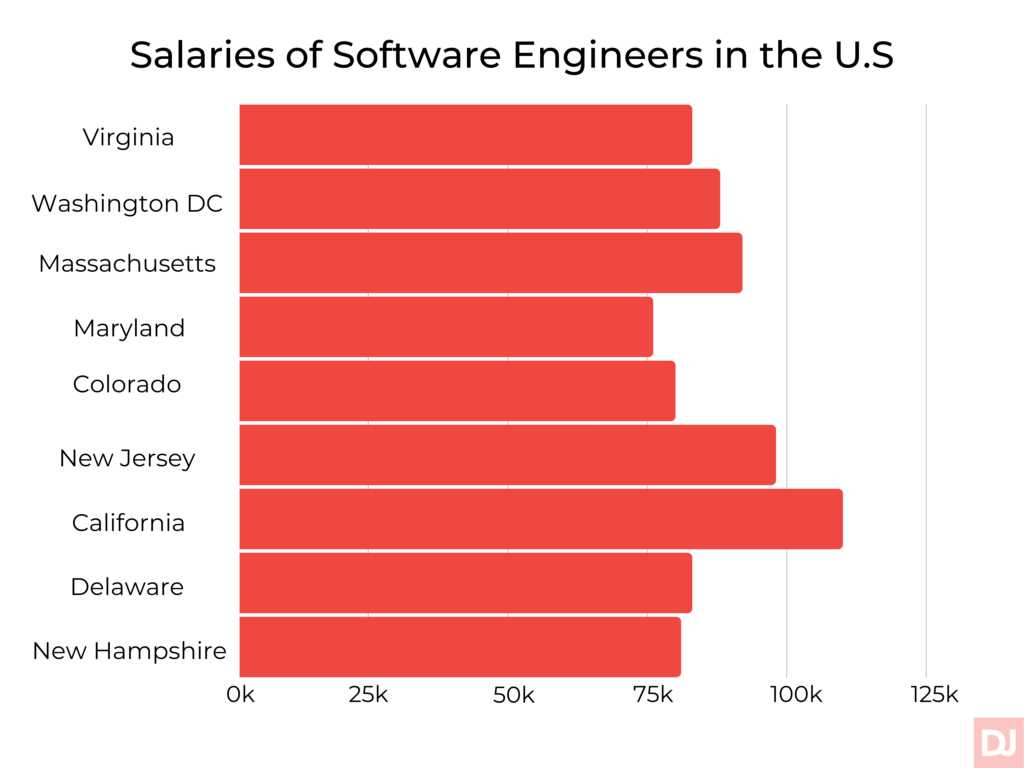Don’t you face issues in business like exorbitant rent, employees calling in sick, or employees not engaged in their work? Remote work solves these problems almost in one fell swoop. Let’s consider the variables that can save your company money by hiring remote workers.
If one thing has taught us this year is that remote work… works. The pandemic accelerated the shift to remote work. And although companies who weren’t prepared for this had a hard time initially, nowadays, most companies are completely adapted (and satisfied) to having distributed teams. Even big tech companies such as Twitter, Apple, and Square, have made remote work arrangements with their employees.
Remote work benefits businesses in many ways, benefiting both employees and employers. However, one of the most noticeable advantages companies have encountered regarding telecommuting is the cost savings of allowing employees to work from home.
11 Reasons Why Hiring Remote Workers Can Save Your Company a Lot of Money
1. Remote workers are more productive
Despite the raging debate about whether remote workers are more productive than in-office workers, it has been found repeatedly that people work better when they have some peace and quiet. Open offices (which is what 70% of US offices are) decrease productivity by 15%. Businesses approximately lose $600 Billion a year due to workplace distractions, according to the TeleworkResearchNetwork. There is no exact figure as to how much more productive remote workers are, when compared to office workers (because the correct answer is “it depends”). But in one survey by CoSo Cloud remote workers were 77% more productive than office workers!
2. Remote work reduces absenteeism
The same survey by CoSo Cloud also showed that remote workers are 52% less likely to take time off work when sick. That finding is corroborated by another study from Softchoice, which showed that 57% of remote workers worked when ill and 44% worked on vacation. Smaller tasks like answering emails or phone calls, or completing urgent tasks don’t get put off even when remote workers are on vacation. Because they’d prefer to get it done immediately, rather than let everything pile up (and they already have the means to work from beyond their desks).
3. Remote work decreases turnover
According to Gallup, remote workers are somewhat more engaged (32%) compared to their office counterparts (28%). But because they save an average of $5000/year working from home, remote employees are more likely to stay with a company longer. Also, according to a study made by an insurance company, turnover rates dropped to 0% and productivity increased by 18% when they offered certain employees the opportunity of working remotely.
4. Remote work reduces healthcare costs
While working from open offices increases the probability of sickness, people working from home tend to get sick far fewer times. In partnership with Mental Health America (MHA), FlexJobs surveyed more than 800 employees regarding their mental health and wellness. 48% of the respondents say their current work-life balance is excellent, compared with 36% of employees that didn’t have remote work arrangements. Understandable – when the stress decreases and morale improves, health automatically follows suit. So as a small business owner, if you pay for your remote workers’ health insurance, your premiums will go down.
5. Complete eradication of costs related to on-site injuries
According to the Occupational Safety and Health Act of 1970 (OSH Act), employers are responsible for maintaining a safe and healthy work environment. More importantly, injuries or accidents that happen in the workplace is the burden of the employer. Serious work injuries cost US businesses $59.9 Billion each year, according to the Liberty Mutual Workplace Safety Index 2017.
As a small business owner, you’re liable to pay workers comp. But remote workers don’t have any grounds to file, except for rare cases. Explore affordable options for hiring top talent through the best remote developer sites.
6. Remote workers mean no need for commuter benefits
Many businesses provide transportation and commuter benefits to their employees. It may be a fringe benefit, or in some cities (District of Columbia, New York, and San Francisco) employers may be required to do so by law. Either way, as of 2018, IRS announced that each employee could receive up to $260 pretax dollars per month to cover for transport. That is one thing you don’t have to worry about with your remote workers. If you’re a small remote business with only ten employees, your savings potential is $2600 per month!
7. BYOD translates to no office equipment expenses
There is no mandate as to which equipment you should provide your remote employees with. You could provide them with a complete home office set-up, provide them with a few basics, such as laptops or smartphones. You could even offer a monthly allowance. But at the same time, you could go BYOD (bring your own device). Today 64% of workers already use their own tools at work. According to a Cisco study, 89% of businesses already allow their employees to BYOD, and for US businesses the estimated savings is an astounding $3150 per employee per year.
8. Remote work means less money spent on continuity of operations
Any business worth their salt should have emergency contingency plans that’ll help it get back on its feet once disaster strikes. Even remote ones. But what’s at stake if all your employees work from one physical location is enormously greater. Be it as simple as a snow day when most of the office is out or something horrific like a terror attack – working from a single location can bring your business operations to a halt. Working from home, you’d still need security, IT back up, working smoke alarms, and so on. But you wouldn’t need to spend thousands of dollars on insurance, secure HVAC systems, CPR training for large groups of people, or getting corporate buildings fire or earthquake ready. Remote work also ensures the safety of your employees.
9. Remote work gives you the freedom to hire the right candidates
Possibly the best side effect of going remote is the ability to recruit candidates that’ll fit your company and carry out responsibilities with precision. Companies can spend anywhere from $1000 to $7000 per hire – that’s money you won’t get back if you don’t hire the right candidate. Small Business Trends says hiring the wrong person can cost you up to 27 times that position’s base salary. The shortage of talent is a pandemic that hiring managers have been battling in every industry, possibly more so in the technology sector. According to the 2018 Robert Half Technology Salary Guide, “the persistent shortage of technology workers is no longer just an inconvenience for many employers — it’s quickly becoming a significant business problem.” Well, it’s a business problem you can quickly solve by expanding your talent pool to include remote workers.
10. Remote work can save you from the risky business of offshoring
What’s the best way to take advantage of all the benefits of offshoring without any of the risks? You guessed correctly, remote work. It gives you a chance at all the inherent benefits associated with offshoring – such as greater availability of talents at a fairer pay scale – without having to open shop in a foreign land or subjecting your business to geopolitical risks or international bureaucracy. The hidden costs of offshoring should make you think twice before you embark on a BPO. It’s estimated that offshoring can end up costing your business 65% higher than expected!
11. Hiring full-time remote global workers is the best way your business can save money
The 2018 Robert Half Technology Salary Guide mentions that 44% of CIOs say they miss out on top talents because they cannot afford the expected salary. Tech salaries, which are some of the highest in the country, vary regionally.

Compare that with the average software developer salaries from across the world.

And if you think that’s all well and good for the IT industry, what about the rest? According to the Organisation for Economic Co-operation and Development (OECD) data, the US has the second-highest average salary in the world. Kudos. That’s a loophole you can use to your benefit. You can choose to hire from practically anywhere in the world and still pay less than you would your American employees.
As it happens, countries like Poland, Korea, Italy, Spain, New Zealand, and Finland have standout education programs, and you’ll be spoiled for choice as far as finding the right candidate goes.
But isn’t’ that bad…like promoting a sweatshop mentality, you ask? No, along with the average salary, the U.S. also has one of the highest costs of living. Hence, a reduction in the wages of a prospective employee from another part of the world still lets you be fair to them. And, you know it, many of the countries where the average salaries are low, and the education standard is high, also happens to have lower costs of living than the U.S. This list includes Sweden, Canada, Germany, South Korea, Italy, and Spain and so on.
You may know that remote work is gaining incredible momentum even during this times of uncertainty. Whether you like to look at the details (like the happiness of your employees) or look at the big picture (sustainable long-term plan for the planet) or only worry about your business (imagine the savings you’ll enjoy) – remote work is the answer.
If you’re ready to take the plunge and save your business some significant dough, we’re here to help you hire top international tech talent in less than two weeks. Book a call now.





